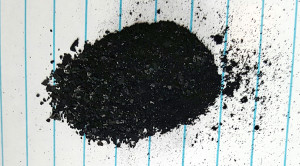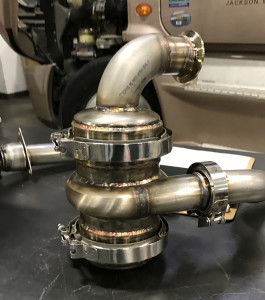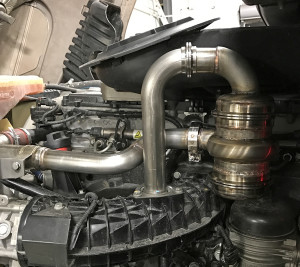 We have some good news for owners of 2003 and newer trucks with engines equipped with EGR systems. But, before I get to that good news, I want to tell you about why we build engines the way we do. Over this past year, we had four trucks in our shop that only got about 100,000 miles out of their main bearings. The reason is that the engines were not line-bored and the crankshafts were not magnafluxed, straightened and polished when rebuilt. This is just not acceptable.
We have some good news for owners of 2003 and newer trucks with engines equipped with EGR systems. But, before I get to that good news, I want to tell you about why we build engines the way we do. Over this past year, we had four trucks in our shop that only got about 100,000 miles out of their main bearings. The reason is that the engines were not line-bored and the crankshafts were not magnafluxed, straightened and polished when rebuilt. This is just not acceptable.
When you’re building an engine out of the chassis, these are the first two steps of building a good foundation for your engine. Once the crankshaft is placed into the main bearing saddle and the bolts are torqued, you should be able to turn the crankshaft with one hand. Those of you who were at Kevin Rutherford’s CMC in Council Bluffs, Iowa last summer had the opportunity to turn the crankshaft of the Signature engine we built during the conference. When the line-bore is correct and the crankshaft is straight, the main bearings will last a million miles or more. That is the right way to build an engine.
If you think a crankshaft is straight after running in a truck for two million miles, you really need to think about this, because the block does warp and twist, and the crankshaft will follow the bore of the block. The worst Detroit Series 60 crankshaft we have straightened was only bent .028, and the worst Cat crankshaft was .021 bent. This might not sound like a lot to you, but when you know that the clearance in a rod and main bearing of a semi-truck pulling a hill is only half of a micron, a bend in the crankshaft of 21 thousandths is huge! When the engine is on the floor, and it’s going to be rebuilt, this is the time to make sure the foundation is perfect.
 On an unrelated note, one of my pet peeves is when I return a call to an owner operator and his voicemail is not set up or it’s full and I can’t leave a message. He probably thinks that nobody wants to return his call. This is not true – I always try three times to return a call, but when there is no mail box, I can’t leave a message. Please take care of your phone, as it’s a very important part of your business. And, for Pete’s sake, have a voicemail so we can communicate! End of rant.
On an unrelated note, one of my pet peeves is when I return a call to an owner operator and his voicemail is not set up or it’s full and I can’t leave a message. He probably thinks that nobody wants to return his call. This is not true – I always try three times to return a call, but when there is no mail box, I can’t leave a message. Please take care of your phone, as it’s a very important part of your business. And, for Pete’s sake, have a voicemail so we can communicate! End of rant.
Now for the good news! As you might already know, we have been building a soot separator for newer trucks equipped with EGR engines. The first soot separator was installed on a 2014 Detroit DD15. The first 1,650 miles, the owner operator said he only used 170 gallons of diesel fuel, which is 9.7 miles per gallon. The device separated 8.5 ounces of soot from the EGR stream before it entered the intake air flow. According to the scan gauge and the ECM on the truck, the calculated exhaust gas temperature was reduced by 150 degrees, which will also lead to a reduction in NOx emissions. This truck is not equipped with one of our EGT or pyrometer gauges, so the next time the truck is in our shop, we will install one to get an accurate reading of the exhaust gas temperature.
By removing the soot, the fuel mileage of our test truck increased by 1.6 miles per gallon. It sounds too good to be true (and we agree) – however, time will tell. Next month we will install a soot trap on a new 2017 ISX Cummins. According to Cummins, the ISX EGR/DPF/DEF engine of today will eat six pounds of soot in 30,000 miles. In an average year (150,000 miles), the engine will have consumed 30 pounds of soot. It’s incredible that the engine can live under those circumstances. Just think how long it might run if we removed 95% of the soot and then dumped it in the trash can, where it belongs. Next month we will have more news on the Pittsburgh Power Soot Separator, and you will also be hearing us talk about it on the Kevin Rutherford radio show, so stay tuned.
 Our new Full Tilt intake manifold for the 2014 and newer ISX Cummins not only improves fuel mileage by 3 to 5 tenths, but the engine responds quicker and pulls smoother, as well. It’s going to be interesting to see even more improvements, once our soot separator is installed with the intake manifold. Great things are coming, along with having a businessman as President. I have said for years that we need business people in politics – and now it’s finally going to happen! If you have any comments or questions, I can be reached at Pittsburgh Power in Saxonburg, PA by calling 724-360-4080. For more details about our products, visit www.pittsburghpower.com.
Our new Full Tilt intake manifold for the 2014 and newer ISX Cummins not only improves fuel mileage by 3 to 5 tenths, but the engine responds quicker and pulls smoother, as well. It’s going to be interesting to see even more improvements, once our soot separator is installed with the intake manifold. Great things are coming, along with having a businessman as President. I have said for years that we need business people in politics – and now it’s finally going to happen! If you have any comments or questions, I can be reached at Pittsburgh Power in Saxonburg, PA by calling 724-360-4080. For more details about our products, visit www.pittsburghpower.com.
